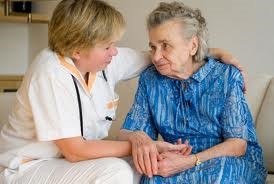Certified Nursing Assistant Training: Clinical Work
As a CNA you will assist nurses and other healthcare professionals, by taking a patient’s vital signs, documenting on a patient’s condition, and performing care needs such as bathing and bathroom assistance. During the certified nursing assistant training students will learn about the scope of the nursing assistant’s responsibilities and how they can include answering a patient’s call light in an assisted living facility or hospital, maintaining a clean environment by doing laundry, emptying garbage cans and stocking supplies for nurses and doctors when needed.
CNA Training Basics and their Role in the Medical Field
Part of the CNA’s responsibilities will also include transferring and helping a patient to ambulate. Transferring refers to the correct way to move a patient who is unable to bear weight on their legs, to different surfaces in a room, such as transferring from the bed to a wheelchair or from a wheelchair to a toilet. Ambulating refers to how a patient walks, be it with a cane or walker. Often the CNA will need to provide stand-by assistance ensuring the patient does not fall.
Bed sore care is another important aspect of the job that will be included in certified nursing assistant training. Bed sore prevention will involve educating students on the proper way to turn and position a patient who is bed bound. A patient that is unable to get out of bed needs to be turned every hour in order to prevent bed sores from occurring. Because bed bound patients suffer from poor circulation, once they develop a bed sore it can be almost impossible to get rid of it. Pillows are used when re-positioning a patient and are placed under areas that are prone to getting sores, such as the hips and elbows.
Vital sign monitoring will involve taking a patient’s temperature, blood pressure, pulse and aspirations in order to determine if a patient is suffering from decline or discomfort.
The CNA Training Process

Clinical hours will involve working with certified CNAs, assisting with transferring patients, taking vital signs, assisting patient’s to the bathroom, providing catheter care, changing bed bound patient’s bedding and feeding and bathing patients.
Once the coursework and the clinical certified nursing training portion of the program have been completed students will need to take state licensing exams in order to obtain certification.
